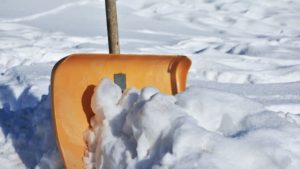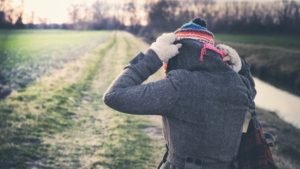Here in the Eastern States, winter time can be a very chilling experience, especially for our senior citizens. As they get older, the colder weather puts their bodies at further risk. Because of this, it’s crucial to pay very close attention to their well-being.
In this post, we’ll run down some of the things that can be done to protect our seniors and keep them as safe, happy, and as healthy as possible!
Keep the Sidewalks Clear
Anyone who lives in North Carolina understands completely just how debilitating snow and ice can be on our commute. For our senior citizens, falls can be a real risk. That’s why it’s important to keep sidewalks, steps, and driveways  completely clear.
completely clear.
Also, be sure to put down road salt or sand to prevent people from slipping. Those over the age of 65, especially those with a history of heart disease or high blood pressure, should avoid shoveling the snow themselves as it can cause severe strains.
Dress Warmly
 As we get older, our bodies tend to produce less body heat. This can leave us susceptible to hypothermia, even inside of our very homes. Other health conditions can leave seniors just as vulnerable to the elements.
As we get older, our bodies tend to produce less body heat. This can leave us susceptible to hypothermia, even inside of our very homes. Other health conditions can leave seniors just as vulnerable to the elements.
Don’t spend too much time outdoors especially during cold and windy days. Keep the thermostat at a comfortable level and wear layers of warm clothing to reduce heat loss. Be sure to have plenty of blankets when the temperature starts to drop even further at night, and drink plenty of hot beverages.
Be Mindful of their Health Conditions
 While a lot of what we have talked about in this post has been fairly common sense approaches, it’s also vital to take into account whatever conditions our seniors are currently experiencing.
While a lot of what we have talked about in this post has been fairly common sense approaches, it’s also vital to take into account whatever conditions our seniors are currently experiencing.
Those with Dementia or Alzheimer’s disease may forget to take into account the cold weather and how to dress appropriately. That’s why those dealing with symptoms that cause memory loss should be kept under a watchful eye. This is to ensure their well-being while also avoiding potential dangers by mitigating risks.
Leave a Reply